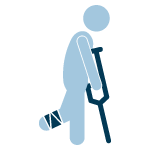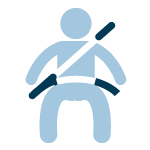Biomechanics
Biomechanics is the study of how the human body responds to force and motion. Most Engineers study materials like plastic and steel. Physicians are trained to identify and heal. So why ask them how injuries occur, or if a causal relationship exists? These are questions to be answered by Biomechanists, who study the materials that make up the human body.
Understanding all of the facts about an injury is essential. Here are a few areas where Biomechanical expertise can help:

Injuries don’t just occur, they are the result of specific loading conditions. Some injuries are the result of trauma, others are due to repetitive loading conditions.
Did this event cause that injury? Do the injuries make sense with the circumstances? Were they predisposed?

Occupant Kinematics is the study of how people move within a vehicle, typically during a collision. Assessing how a person moves within an occupant compartment requires knowledge of how the tissues of the human body interact with the components of the vehicle interior.
This understanding allows determinations about seating positions, contact points, injury potential, and occupant identification.

Assessing how humans interact with restraints requires an understanding of both the mechanical and biological systems that are involved. Biomechanists possess this combination of expertise as such are ideally suited to answer questions about restraint use and effectiveness.
A Biomechanist can help to determine if a seatbelt was worn. If it wasn’t, they can assess what effect proper usage would have had on the outcome.

Helmets serve a specific purpose, but they can’t prevent everything…especially if they aren’t worn! Assessing helmet use and/or effectiveness requires a thorough understanding not only of how the human head responds to force and motion, but the specific mechanisms associated with different types of brain injuries.
Helmets help, but they aren’t flawless. They can be deficient, they can be worn incorrectly, and sometimes, the event simply exceeds their protective capabilities. This applies to all types of protective equipment. Was it worn? Would it have made a difference?